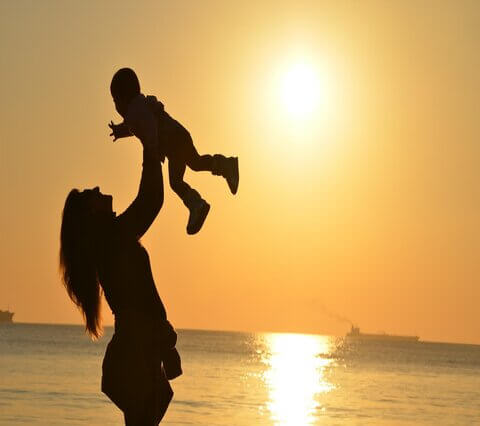

Summer is almost upon us, and we’ve already had a couple of hot days here in the UK. Many of us only get to experience heat above 30 Celsius when we go abroad and spend the day on the beach and dipping in and out of the water.
But temperatures are rising in the UK and when you have to get on with your day in extreme heat it can be exhausting. Read our guide which tells you the difference between heat stroke and heat exhaustion. And learn how to protect yourself from the sun.
Heatstroke is more serious than heat exhaustion and the symptoms shouldn’t be ignored because they can lead to serious illness. Heat stroke occurs when your core temperature goes above 40ºC.
If someone you’re with seems mentally confused or has shallow breathing this could be a sign of heat stroke. They may also lose consciousness.
Try to keep the person as cool as possible by removing excess clothing and providing ventilation either by fanning them yourself or by using an electric fan. You can also cover them with a cool wet sheet.
If the person is conscious get them to drink water or juice to rehydrate them.
Heatstroke is a medical emergency so you should phone an ambulance to get medical attention.
Heat exhaustion happens when the body’s core temperature rises above normal (37C) up to 40C. Once a person with heat exhaustion is treated, they should recover fairly rapidly, but if you are dealing with a child or elderly person you might need medical assistance.
The symptoms of heat exhaustion are:
If someone with you has any of these symptoms, they need to cool down quickly. Make sure they are out of the sun and somewhere cool. Encourage them to drink juice or water.
Cool their skin with a fan and place a cold pack under the arms and at the neck area if you can. You can also use a sponge that’s dampened with cool water.
Once their body temperature begins to fall the person should feel better within around half an hour.
There are a variety of things you can do to prevent heatstroke or heat exhaustion.
If you do go outside in the sun, then protect your skin with sunscreen. Babies and the elderly should protect their skin with a high-factor cream like Nivea Protect & Moisture Sun Lotion SPF50+ or Eucerin Dry Touch SPF50+
If you are not sure what type of sunscreen to wear have a chat with your pharmacist who can advise you.
If you have a baby in a pram or pushchair, be careful about the cover you use to keep them out of the sun. Covering the pram with a blanket or towel will trap the heat inside the pram and could give your baby heatstroke or heat exhaustion. The Lullaby Trust advises parents to use a sunshade or parasol on a pram.
To keep cool indoors, draw curtains or close blinds to prevent the sun from heating up your rooms. Use an electric fan at night to help you sleep and take your duvet off the bed. If you like to be covered up at night use a thin cotton sheet.

To provide the best experiences, we and our partners use technologies like cookies to store and/or access device information. Consenting to these technologies will allow us and our partners to process personal data such as browsing behavior or unique IDs on this site and show (non-) personalized ads. Not consenting or withdrawing consent, may adversely affect certain features and functions.
Click below to consent to the above or make granular choices. Your choices will be applied to this site only. You can change your settings at any time, including withdrawing your consent, by using the toggles on the Cookie Policy, or by clicking on the manage consent button at the bottom of the screen.